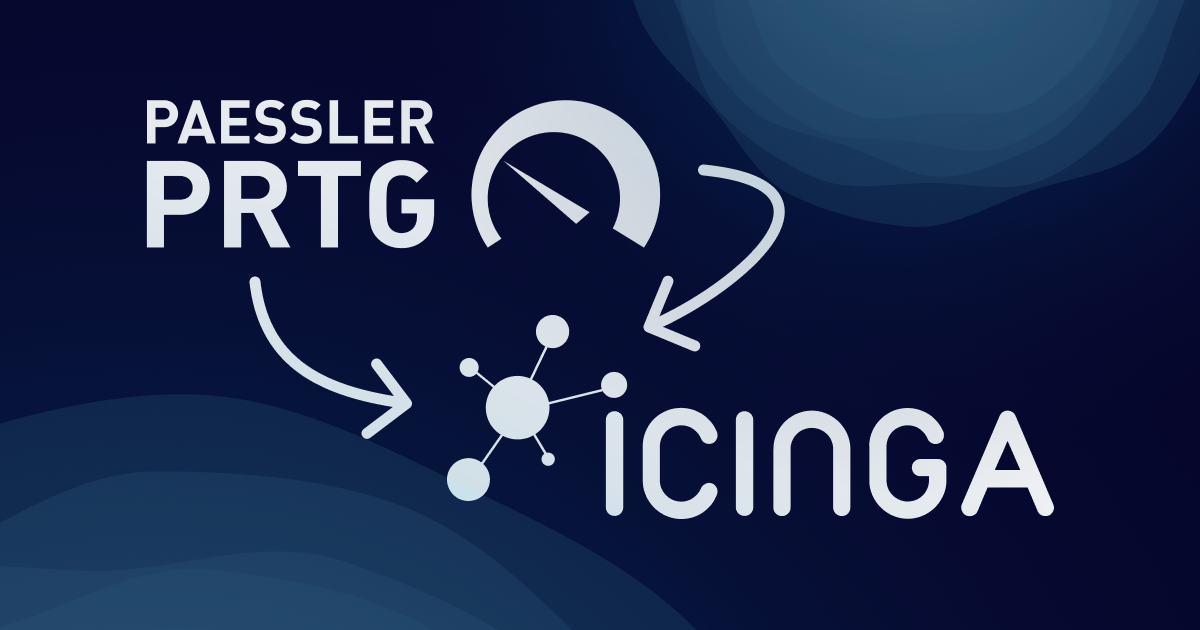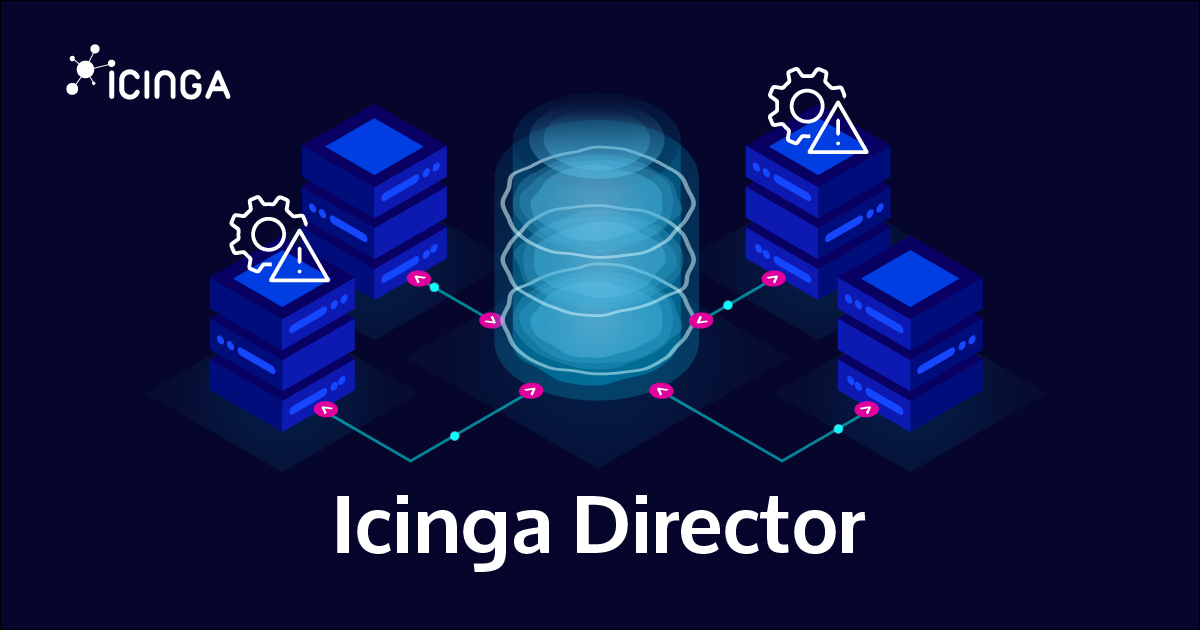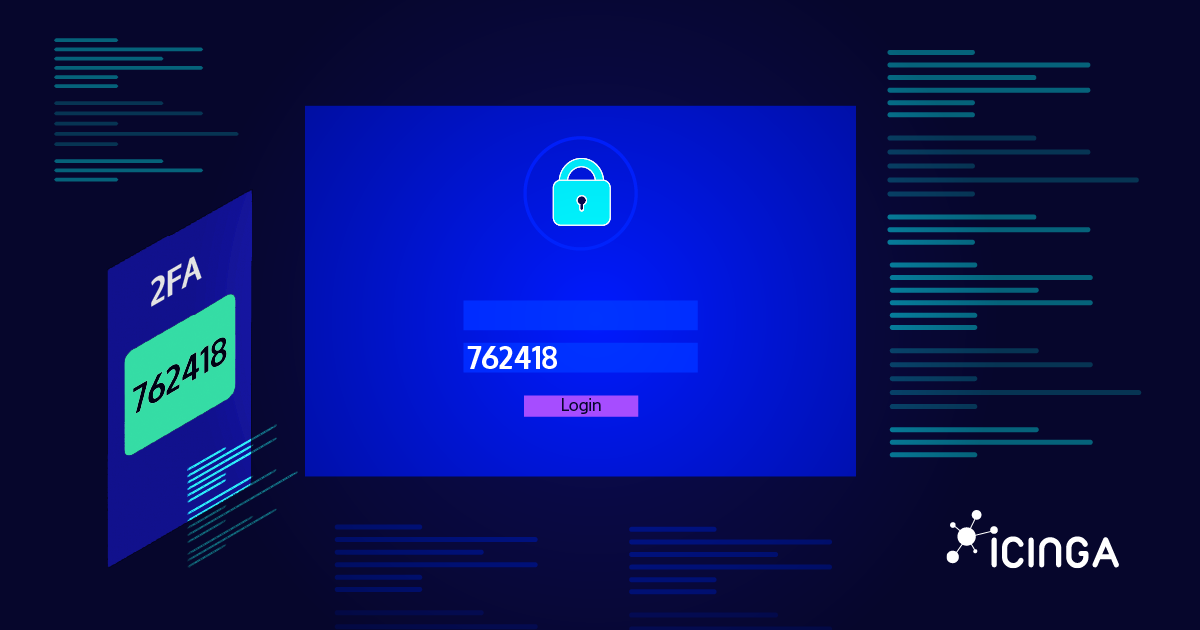If you’re reading this, chances are high you’re looking for a PRTG alternative and considering switching from Paessler PRTG to Icinga. Maybe it’s the rising costs of PRTG, or maybe you want a monitoring solution that gives you more flexibility and control. Whatever your reason, I want to give you an honest, technical perspective on what that switch entails.
I’m not here to tell you PRTG is bad, far from it. PRTG is great at what it does: it’s easy to set up, heavily frontend-focused, and lets you get monitoring going quickly. Icinga takes a very different approach, and that means moving from PRTG to Icinga isn’t just a simple migration, it’s a complete shift in how you do monitoring. This blog post will give you a deep dive in how Icinga might be worth considering for you as an alternative to PRTG.
To be Honest: There’s No Easy Switch
PRTG and Icinga are fundamentally different tools. PRTG is built for ease of use, with a graphical interface that simplifies setup and configuration. It’s largely self-contained, and while it allows some customization, its approach is more static.
Icinga, on the other hand, is built for flexibility and scalability. But that comes with a cost: complexity. Setting up Icinga requires a solid understanding of monitoring principles, Linux administration (though Windows is possible), and scripting. It’s a powerful tool, but you have to put in the effort to make it work for you.
So, if you’re expecting to just import your PRTG configuration into Icinga and be up and running in a few clicks – unfortunately, that’s not how it works.
Why Even Consider Icinga as one of PRTG Alternatives?
If switching isn’t easy, why bother? Here’s where Icinga shines:
- It’s free and open-source. You’re not forced into licensing costs, sudden price hikes or a subscription model.
- Define exactly what and how you want to monitor things, it’s customisable down to the smallest detail.
- Icinga is built to handle large environments, it scales well even in complex and distributed systems with highly configurable notifications for large and complex team sturctures.
- You can integrate Icinga with all sorts of third-party tools like Grafana, Prometheus, InfluxDB, and even automate configurations with Puppet, Ansible, or Chef.
- Icinga has a large ecosystem of community-driven plugins and modules that extend its functionality. Whether you need to monitor specific applications, integrate with other tools, or simplify certain tasks, chances are the community has built something for it.
If you need a PRTG alternative solution that grows with you and allows deep customization, Icinga is a great fit. But again – be prepared to put in the work.
Evaluating Total Cost of Ownership (TCO)
When comparing Icinga with PRTG, the discussion often goes beyond features. It’s about the total cost of ownership (TCO). For most organizations, this includes more than just the purchase price of a monitoring tool. It reflects how the software scales, integrates, and adapts to long-term operational needs.
PRTG’s sensor-based licensing can become a limiting factor as environments grow. Each new device, port, or metric adds sensors, which directly impact costs. Over time, even small configuration changes can push companies into higher license tiers. This makes budgeting unpredictable, especially in dynamic infrastructures with frequent scaling.
Icinga takes a fundamentally different approach.
As an open-source solution, it allows unlimited checks, integrations, and endpoints without added license costs. You can monitor servers, containers, applications, and cloud workloads without worrying about per-sensor fees. This flexibility not only lowers direct expenses but also reduces administrative overhead in the long run.
Icinga runs completely without subscriptions, but they can simplify lifecycle management in production. With the different subscription options, you get access to curated and tested package repositories for enterprise Linux systems, professional support, and consulting. They’re useful when you need predictable maintenance or assistance at scale.
Find out more on the dedicated subscription page.
Beyond licensing, Icinga’s automation capabilities and modular design help minimize long-term maintenance costs. Integrations with tools like Ansible, Grafana and Jira streamline workflows and reduce manual configuration effort.
In short, Icinga’s TCO advantage comes from:
-
No per-sensor or per-node license fees
-
Flexibility to scale monitoring without cost jumps
-
Reusability through automation and templates
-
A thriving open-source community that adds value without vendor lock-in
In practice, TCO is about predictability and fit. Organizations value the ability to add endpoints and new checks without revisiting license tiers, while also reducing day-to-day effort through automation and integrations.
If you want to have a first look and see Icinga in action, try the demo environment.
What You Need to Know to Get Started
Moving to Icinga isn’t just about installing software. To set up and maintain an Icinga environment successfully, you’ll want to be comfortable with:
1. Linux and Command Line Basics
While you can run Icinga on Windows, it’s most commonly used in Linux environments. You’ll need to know your way around the command line, package management, and basic system administration.
2. Networking Knowledge
Understanding how services communicate, how to configure firewalls, and how to troubleshoot connectivity issues will help a lot when setting up checks and distributed monitoring.
3. Scripting (Bash, PowerShell, Python, etc.)
Icinga allows for custom check commands, meaning you can write scripts to monitor anything you need. Knowing how to write and debug scripts will give you a big advantage. It’s not a requirement, since a lot of devices and applications already have well working plugins written and shared by members of the community, but it definitely helps to know your way around!
4. Icinga’s Domain Specific Language or the Icinga Director
Icinga uses a configuration language that defines hosts, services, notifications, and dependencies. It’s structured but requires some learning, especially if you’re coming from a GUI-heavy tool like PRTG. There is also Icinga Director, a frontend tool designed to simplify configuration, but it still has a learning curve and requires understanding of Icinga’s core principles to be useed effectively.
5. Understanding of Databases (MySQL/PostgreSQL)
Icinga stores monitoring data in a database. Knowing how to set up, optimize, and maintain databases will be helpful, especially in larger environments.
6. Automation and Configuration Management (Ansible, Puppet, Chef, etc.)
If you’re managing a lot of servers, automating Icinga configurations will save you a lot of manual work. The Icinga Director is also designed to help you automate, but again, it has a barrier of entry.
Final Thoughts
If you’re looking for a plug-and-play solution with minimal effort, PRTG might still be the better fit. But if you’re ready to take control of your monitoring, Icinga gives you the tools to build exactly what you need.
PRTG Alternatives FAQ
Is Icinga free to use?
Yes, Icinga is an open-source monitoring software that is free to use with enterprise-grade features. However, for enterprise Linux distributions like RHEL, Amazon Linux 2, and SLES, access to official Icinga packages requires a Repository Subscription. This subscription provides access to these packages and additional software extensions. This helps us keep Icinga free for the community.
How does Icinga compare to PRTG in large environments?
Icinga scales horizontally across distributed setups and integrates with existing automation workflows which is ideal for large or multi-site infrastructures.
Can I integrate Icinga with my existing alerting or ticketing systems?
Absolutely. Icinga connects natively to tools like Jira, ServiceNow, PagerDury and OpsGenie. Check our full list of Icinga integrations.
What are the main differences between PRTG pricing and Icinga’s model?
PRTG pricing grows with sensors; Icinga has no per-sensor costs, making it more predictable and budget-friendly for growing environments.
What is the best way to try Icinga?
You can explore our online demo or contact our team to discuss your monitoring setup.






